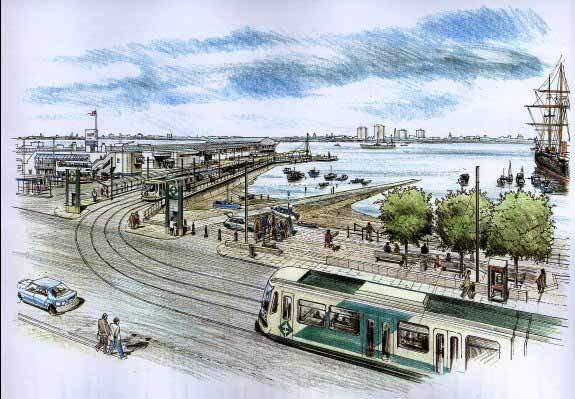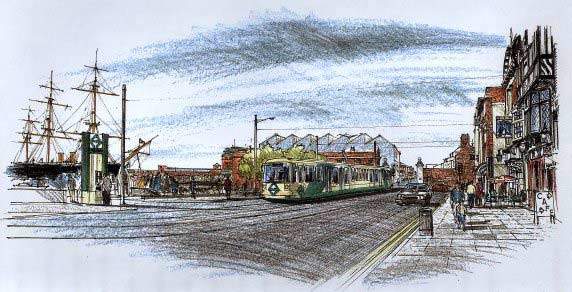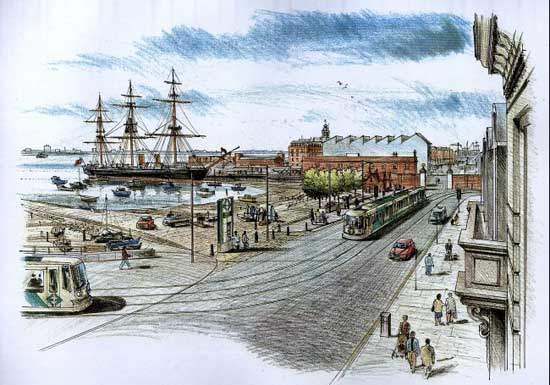Hampshire County Council with Portsmouth City Council has promoted a Light Rapid Transit (LRT) system between Fareham, Gosport and Portsmouth, which would be Phase one of South Hampshire Rapid Transit (SHRT). SHRT is a proposal for a modern rapid-transit system which will provide fast, frequent and reliable public transport services.
The scheme has been dogged by financial problems, which came to a head at the end of 2005 when the UK Government declined to offer support for the scheme because there was clear evidence of cost reduction. The promoters’ response was that there is no alternative scheme to resolve acute road traffic congestion brought the response that the scheme could be revived if the price is right.
The project
The SHRT project offers an attractive alternative to travel on the road network in south Hampshire and forms an integral part of the local public transport system.
Light rail would represent a significant time saving compared with the equivalent road journey. Various modes of transport were studied for this route but public consultation and technical assessment supported the choice of a tram. Nevertheless, the ferry link would remain in operation, likely to evolve into a different type of business.
Phase one of the scheme depended on securing a significantly lower funding offer from the private sector, with a private sector consortium as the operator. Before the funding situation deteriorated, the shortlisted conseortia were SMART (Norwest / Holst / Misubishi / Vinci / Obayshi / Serco) and South Hampshire Supertram (Bouyges / Mowlem / Siemens / Stagecoach).
It was intended for construction to commence in 2002 with completion by around 2005, but it could now be another decade, if all at all, before the scheme is progressed.
Infrastructure
The first phase of SHRT comprises a 14km light-rail project linking Fareham, Gosport and Portsmouth, including a tunnel under Portsmouth Harbour and 16 stops along the route. Interchanges will be made with the bus stations in Fareham, Gosport and Portsmouth and railway stations at Fareham, Portsmouth Harbour and Portsmouth and Southsea.
About 70% of the route is on segregated alignment (disused railway) with the remaining 30% on-street.
A major headache is the immersed tube tunnel 1km across Portsmouth Harbour, which now needs to much deeper than anticipated because the Ministry of Defence is considering the construction of warships that will have a greater draught.
The tunnel under the entrance to Portsmouth Harbour would need to be constructed in sections and lowered into a trench dredged in the seabed. In addition to being a cost-efficient method of constructing the crossing it would allow less deep workings and so enable stops to be built at both Gosport Esplanade and the hard interchange in Portsmouth.
Rolling stock
The type of light rail vehicles used would depend wholly upon which consortium wins the contract, but it is now standard practise to provide low floor access, and have performance characteristics capable of completing the end-to-end journey times in under 30 minutes, with an anticipated service frequency of 7.5 minutes during the day and 15 minutes in the evening.
The future
Dependent on gaining approval for the first phase of the scheme, the local authorities have ambitions for light rail to have a much greater penetration of the urban areas it serves, most notably the business and population centres of Portsmouth, Southampton and Fareham.








